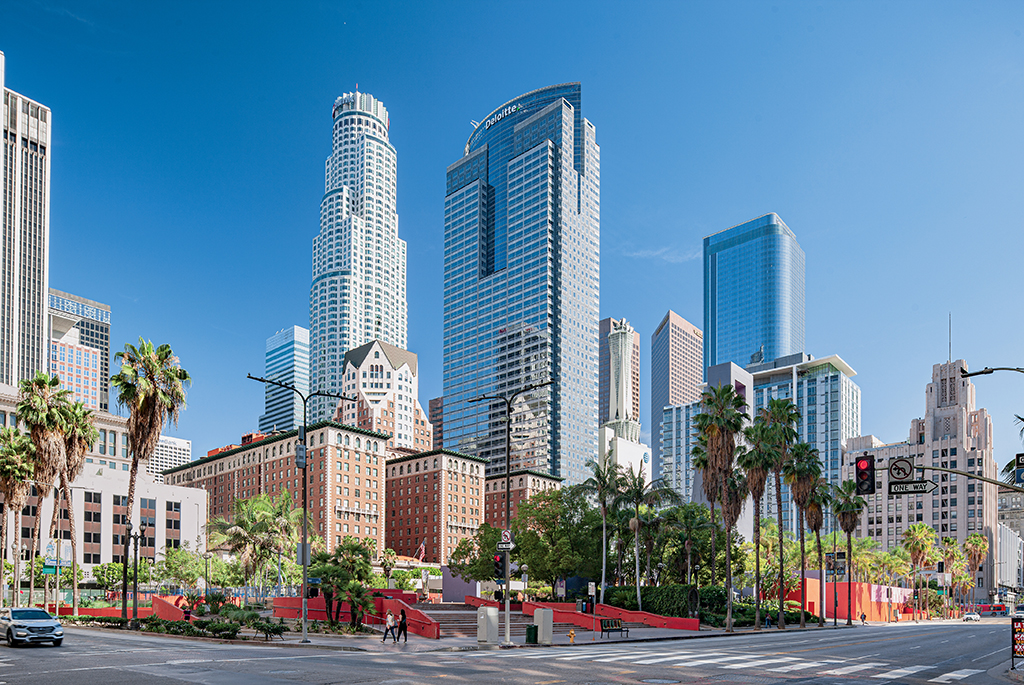A native of Great Britain, Tim Street-Porter studied architecture there before arriving in Los Angeles four decades ago – along with his wife, writer and designer Annie Kelly.
He immediately fell in with an unknown group of makers and designers in Venice Beach. Among them: Artist Ed Ruscha, and an unknown Frank Gehry. “It was an isolated community of artists,” Street-Porter says. “Ed Ruscha had me photographing his work.”
Then Gehry broke through. “I photographed his first house – it was in all the architecture magazines,” he says. “He went from being one of the most obscure architects in the world to the most well known.”
He also helped Street-Porter get a green card, so he could stick around in the place the photographer calls “kind of a cowboy town, with all these quirky wonders.”
He lost no time photographing them all. “It was not anything I’d come into contact with in England or Europe – but here I was at the end of the world in L.A.,” he says. “David Hockney was discovering L.A. for the same reasons – sunshine, palm trees, desert and architecture. I fell in love with it.”
Eventually, a New York publisher reached out to him. “Rizzoli hired me to do a book in 2005, called Los Angeles Deluxe,” he says. “They commissioned me to go out and photograph anything I loved about L.A.”
That turned into a long-term relationship, with more books like one called “Los Angeles Modern,” he says. “With my wife I’ve done 15 to 20 books, including interiors because she’s an interior designer.”
She’s a writer with strong organizational skills employed in their newest collaboration, “Los Angeles Today.” Street-Porter spent most of 2019 shooting it, coming in just under the pandemic wire with his final shots in early 2020.
He found himself surrounded by places he knew well – and that inspired him. “I had all these years of traveling around, the result of commissions, and I loved exploring and taking photos of the urban land scape of L.A.,” he says. “I had always been a natural documenter and architectural photographer and here I had a great subject.”
The new book is 256 pages of the city’s spectacular architecture, including museums like the Broad, the flourishing Arts District, Hollywood’s Chateau Marmont and historic Beverly Hills. There are modernist homes by Richard Neutra, Rudolph Schindler, and John Lautner – as well as Frank Lloyd Wright’s Hollyhock House – all set against dramatic backdrops of sky and sea.
It’s aptly subtitled “City of Dreams: Architecture and Design,” because of L.A.’s historic roots as a cinematic city. “The early phase of L.A. was synonymous with the beginning and arrival of the movie industry’s dreams and fantasies,” he says. “And the early architecture also couldn’t happen anywhere else.”
That’s because Los Angeles isn’t like anywhere else. “It’s not like London and New York – L.A. was like a clean slate in the 1920s and earlier,” he says. “And the architects loved it because it was a new and pristine environment.”
Schindler arrived in L.A. as a refugee from pre-World War II Europe, when Wright was doing his early houses there. “He stayed in Wright’s office, then did his own radical house, and said to Neutra: ‘You need to come out here.’”
The rest is history, most of it documented in all of Street-Porter’s books, but especially this one.
For more, go here.
[slideshow id=2274]

